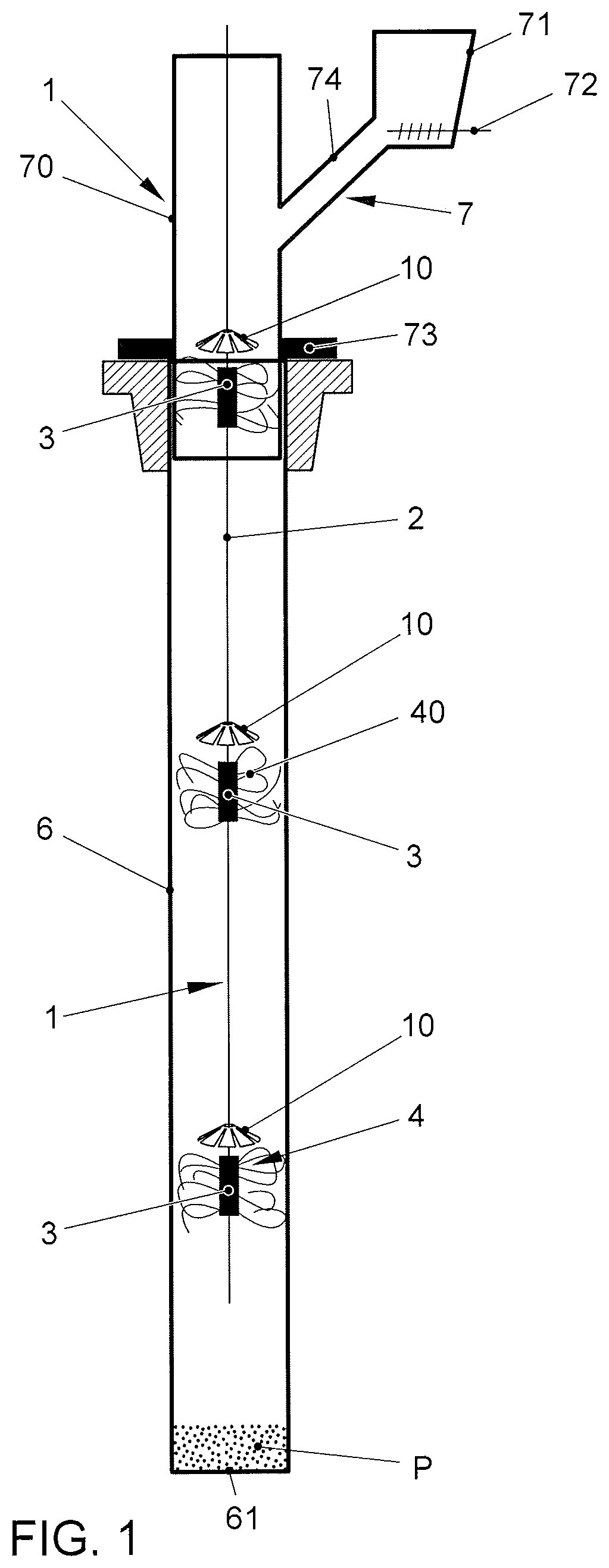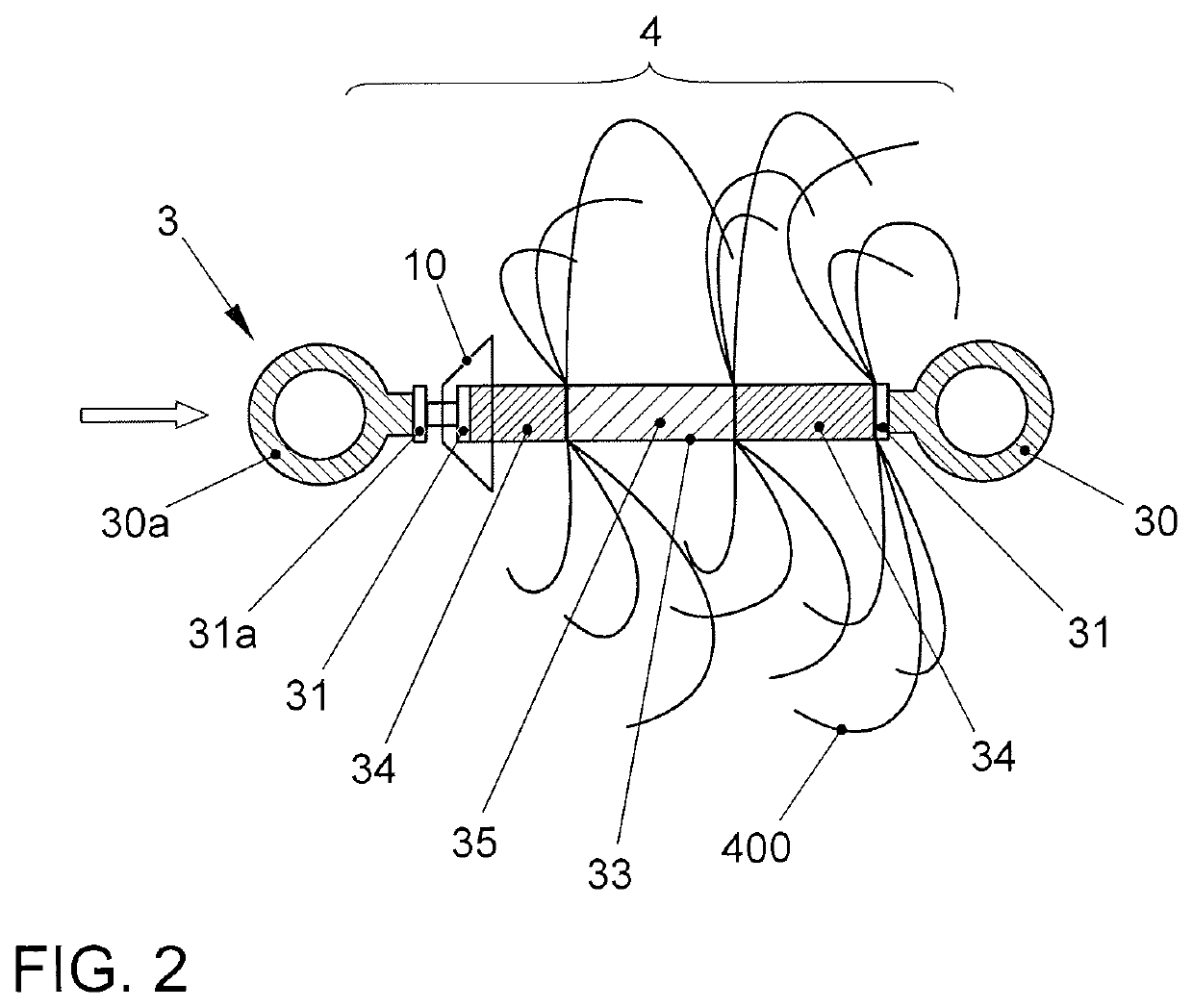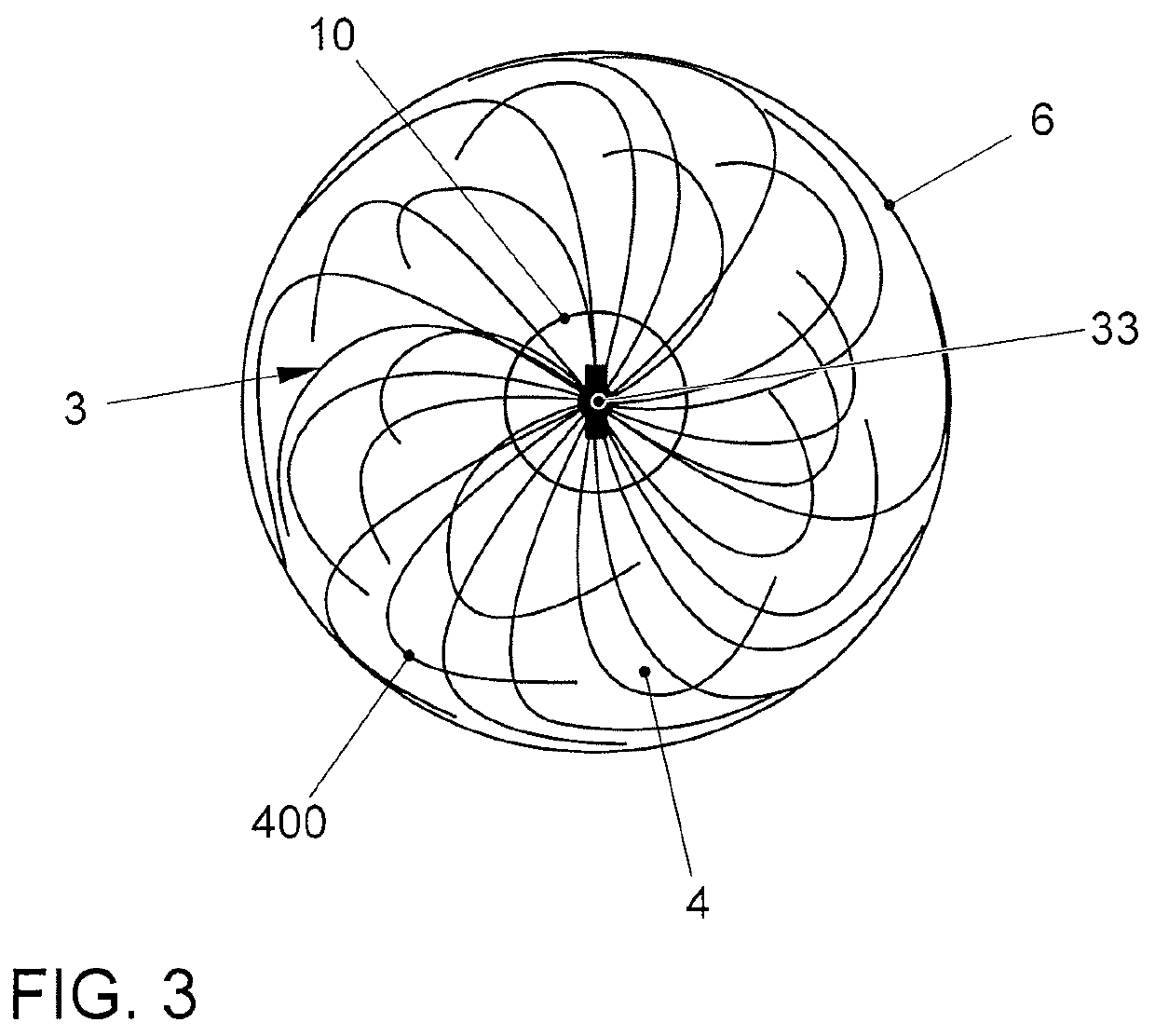Device for filling a tube with particulate filling material
a technology of filling material and tube, applied in the direction of loading/unloading, chemical/physical processes, chemical apparatus and processes, etc., can solve the problems of catalyst mass absorption, unfavorable pressure loss, particle breakage, etc., to reduce the filling rate, the effect of preventing clogging and slowing down the filling ra
- Summary
- Abstract
- Description
- Claims
- Application Information
AI Technical Summary
Benefits of technology
Problems solved by technology
Method used
Image
Examples
Embodiment Construction
a) General Definitions
[0029]A net structure is “permeable” within the meaning of the invention when the filling-material particles do not pass through the net structure in an unimpeded manner during the filling of the tube but come into contact with at least one net element of the net structure and in this way have their falling speed reduced.
[0030]A “net structure” within the meaning of the invention should be understood as being a radial “open” or “closed” arrangement of individual, at least one (for example a metal-wire thread that is formable into individual loops), in particular at least two net elements (for example loops, zigzag fibers, curved fibers or combinations thereof) on the fall arrester element. Furthermore, a net structure according to the invention is distinguished by the fact that, in its vertical projection, i.e. in plan view of the fall arrester element(s) (or in the filling device extending along the longitudinal axis of the tube), individual, in particular at ...
PUM
| Property | Measurement | Unit |
|---|---|---|
| diameters | aaaaa | aaaaa |
| angle | aaaaa | aaaaa |
| angle | aaaaa | aaaaa |
Abstract
Description
Claims
Application Information
 Login to View More
Login to View More - R&D
- Intellectual Property
- Life Sciences
- Materials
- Tech Scout
- Unparalleled Data Quality
- Higher Quality Content
- 60% Fewer Hallucinations
Browse by: Latest US Patents, China's latest patents, Technical Efficacy Thesaurus, Application Domain, Technology Topic, Popular Technical Reports.
© 2025 PatSnap. All rights reserved.Legal|Privacy policy|Modern Slavery Act Transparency Statement|Sitemap|About US| Contact US: help@patsnap.com



